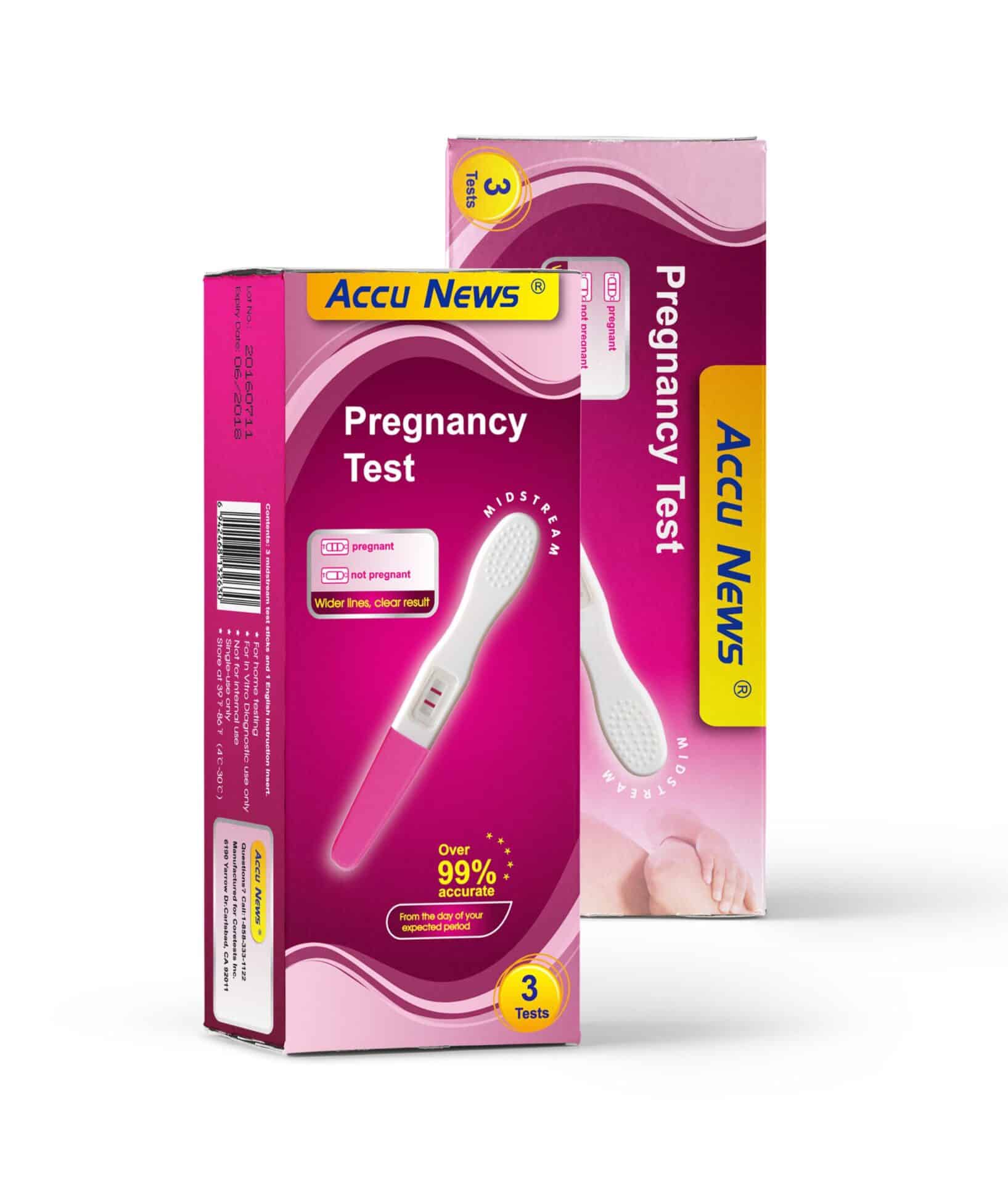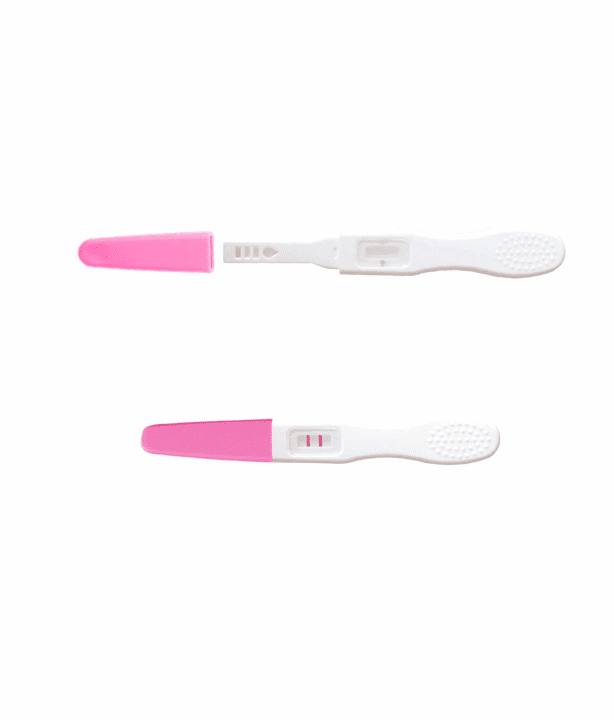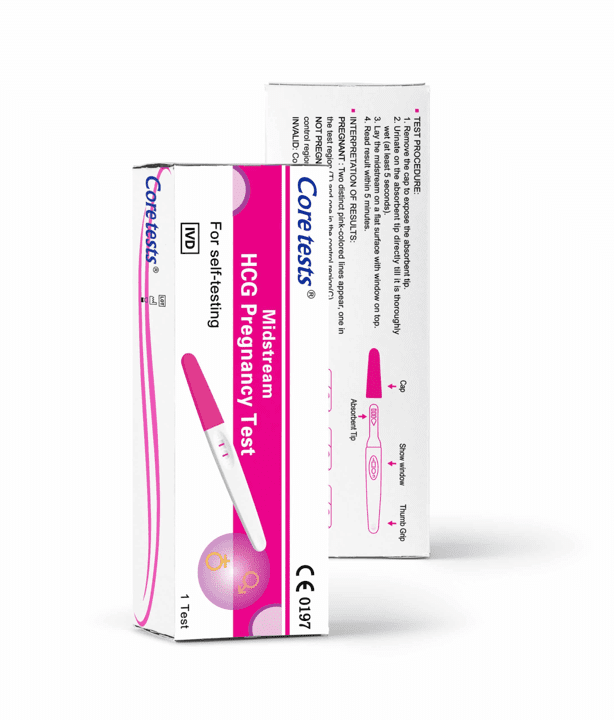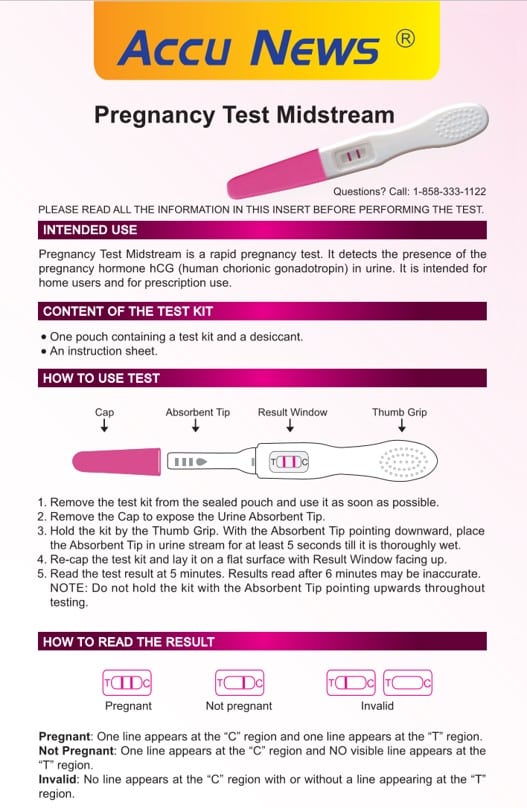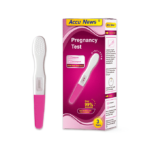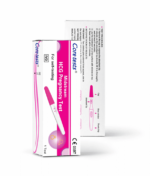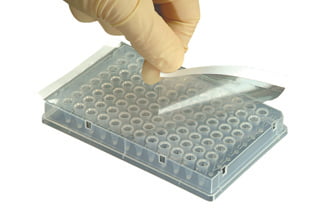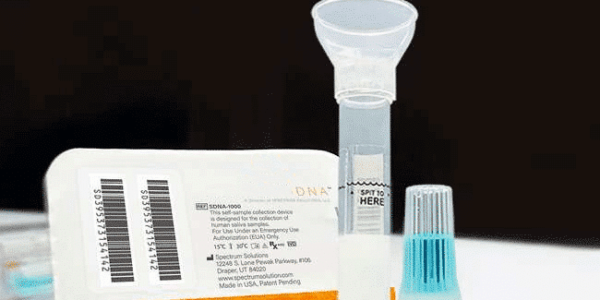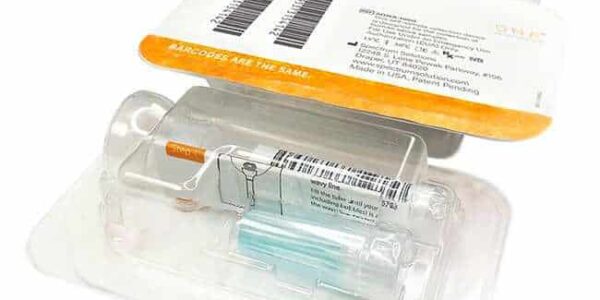Back to products

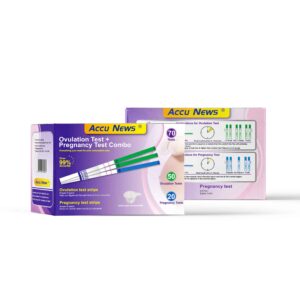
Accu News® (LH) One-Step Ovulation Test
$2.99 – $179.99Price range: $2.99 through $179.99
Accu News® HCG Pregnancy Test
INTENDED USE
Accu News® HCG Pregnancy Test is a self-testing immunoassay made for rapid, visual and qualitative determination of human chorionic gonadotropin (HCG) in urine specimen to aid in the early detection of pregnancy.
TEST PROCEDURE
1. Remove the test midstream from the sealed pouch and use it as soon as possible.
2. Remove the Cap to show the Absorbent Tip.
3. Hold the midstream by the Thumb Grip with the exposed Absorbent Tip pointing downward. Urinate on the Absorbent Tip directly till it is thoroughly wet (at least 5 seconds).
NOTE: Be careful and do not urinate in the Show Window.
4. Re-cap the midstream and lay it on a flat surface with window on top.
5. Wait for pink-colored lines to appear. Read results within 5 minutes. Do not read results after 5 minutes.
PACK SIZE
SKU:
HCG-03-01 / HCG-03-20 / HCG-03-03 / HCG-02-20 / HCG-02-40 / HCG-01-01 / HCG-01-20 / HCG-01-100
Categories: Clinical Diagnostics, HCG Pregnancy Test, Women's Health
Description
SPECIFICATION
| Description | Cat. No. | Specification | Specimen | Sensitivity | Package Size | Certificate |
| Pregnancy Test | HCG-01-100 | 3.0mm Strip | Urine | 25mIU/ml 10 mIU/mL |
100 Tests | FDA CE0197 |
| Pregnancy Test | HCG-01-01 | 4.0mm Strip | 1 Test | |||
| Pregnancy Test | HCG-02-40 | 4.0mm Cassette | 40 Tests | |||
| Pregnancy Test | HCG-03-01 | 6.0mm Midstream | 1 Test | |||
| Pregnancy Test | HCG-03-20 | 6.0mm Midstream | 20 Tests | |||
| Pregnancy Test | HCG-03-03 | 6.0mm Midstream | 3 Tests |
READING THE RESULTS
PREGNANT: Two distinct pink-colored lines appear, one in the test region (T) and the other one in the control region (C).
NOTE: The intensity of the pink color in the test region (T) may vary depending on the concentration of HCG present in the specimen. Therefore, any shade of pink color in the test region (T) should be considered positive.
NOT PREGNANT: Only one pink-colored line appears in the control region (C). No apparent pink line appears in the test region (T).
INVALID: Control line fails to appear.
INSTRUCTION FOR USE
Questions
- Could a negative result be wrong?
It’s possible to get a negative result from a home pregnancy test when you are pregnant. This is known as a false-negative. You might get a false-negative if you:
(a). Take the test too early. The earlier you take a home pregnancy test, the harder it is for the test to find HCG. For the most accurate results, take a home pregnancy test after the first day of a missed period.
(b). Check test results too soon. Set a timer to go off at the time the test directions say you should check the result. Don’t check the test until that amount of time has passed.
(c). Take the test later in the day. For the most accurate results, take the test right after you get up in the morning. That’s when your urine is the most concentrated, making HCG easier to find. - Could medicine change the test results?
Fertility medication or other medicine that contains HCG might affect home pregnancy test results. Most medicines, though, including antibiotics and birth control pills, don’t affect the accuracy of home pregnancy tests. - What happens next?
Based on the test results, consider taking the following steps:
(a). Your home pregnancy test is positive, or you’ve taken a few home pregnancy tests and gotten mixed results. Make an appointment with your health care provider. You might need a blood test or ultrasound to confirm the pregnancy. The sooner a pregnancy is confirmed, the sooner prenatal care can begin.
(b). Your home pregnancy test is negative. If your period doesn’t begin, take the test again in a few days or in one week. It’s especially important to do this if you took the test before or right after a missed period.
(c). You continue to get negative test results, but your period doesn’t start. Or you still think you might be pregnant. Contact your health care provider. Your provider may suggest you take a blood test to check for pregnancy, which may be more accurate than a home test. Also, some health problems may lead to missed periods. If you’re not pregnant, your health care provider can help you find out what’s causing missed periods.
Additional information
| Product No |
HCG-01-01 ,HCG-01-100 ,HCG-01-20 ,HCG-02-20 ,HCG-02-40 ,HCG-03-01 ,HCG-03-03 ,HCG-03-20 |
|---|---|
| Packing Size |
1 Test ,100 Tests ,3 Tests ,40 Tests ,20 tests |
Shipping & Delivery
Related products
100 ml Reagent Reservoir
$199.99
Select options
This product has multiple variants. The options may be chosen on the product page
Amphetamine (AMP) Drugs Test
$59.99 – $109.99Price range: $59.99 through $109.99
Select options
This product has multiple variants. The options may be chosen on the product page
Methamphetamine (MET) Drugs Test
$59.99 – $109.99Price range: $59.99 through $109.99
Select options
This product has multiple variants. The options may be chosen on the product page
Whole Saliva Collection Kit
$9.99 – $12.99Price range: $9.99 through $12.99
Select options
This product has multiple variants. The options may be chosen on the product page



